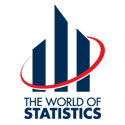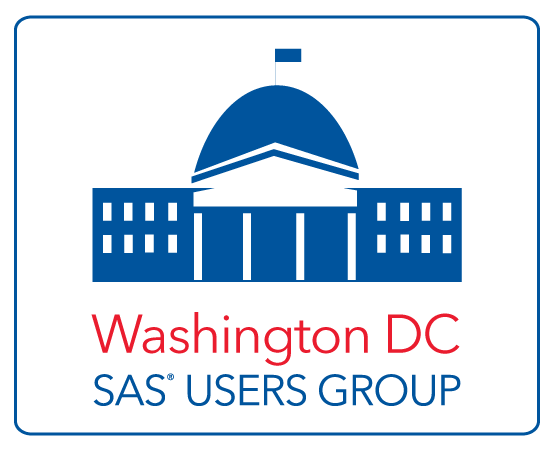January 2009
Contents:
- Volunteers Needed!
- Nominations Sought for 2009 Julius Shiskin Award
- Seminars, Conferences, Symposia & Call For Papers:
- Education Announcements:
- Students' Corner
- Short Courses (includes JPSM short courses)
- SIGSTAT Topics
- Employment Opportunities
- Note From The WSS NEWS Editor
- WSS People
- PDF Versions:
Newsletter
Area Meetings and Courses
- Seminars, Conferences, Symposia & Call For Papers:
VOLUNTEERS NEEDED!
Volunteers are needed at different times between March and June 2009 -- to judge entries in the Curtis Jacobs Memorial Prize for Outstanding Statistics Project; to judge entries in the WSS Statistical Poster Competition; and to judge science fair projects at the regional science fairs in Northern Virginia, suburban Maryland and the District of Columbia. The WSS needs you to volunteer now for any one or all three!
The WSS has a longstanding and active program of reaching out to elementary and secondary school students to encourage them to gain an understanding and appreciation of Statistics. We do this in part by sponsoring two annual competitions - the Curtis Jacobs Memorial Prize and the WSS Statistical Poster Competition - and by awarding prizes at the annual regional high school science fairs.
Since 1986, WSS has provided special awards at the five regional science fairs to students whose projects demonstrate excellence in data analysis or the application of statistical methods. The fairs are held on Saturdays in March. They need volunteers willing to devote one Saturday morning to interact with students, judge their projects, and give them some guidance and encouragement. Those who have participated in these activities have very much enjoyed meeting the students, talking with them, and seeing the widely diverse projects they have presented. Last March, 27 of your fellow WSS members judged and awarded prizes to projects in Behavioral and Social Sciences, Engineering: Materials and Bioengineering, Chemistry, Physics and Astronomy, Environmental Management, Medicine and Health Sciences, and Animal Sciences. If you are interested in being a science fair judge, contact Bob Clickner at Robertclickner@westat.com, or 301-294-2815.
The Curtis Jacobs Award program focuses on gathering information and analyzing for making decisions. Entries are typically due in May; judges review and score the entries at their convenience and transmit their evaluations and scores by late May. If you are interested in volunteering to judge the entries, contact Tom Krenzke at TomKrenzke@westat.com or 301-251-4203.
The rposter competition is open to students in grades K-12 and entries may be in any area of statistics. Judging is typically in May or June. If you are interested in judging, contact Cammy Fine at Cammy.Fine@ey.com or 202-327-7730, or Ryan Petska at Ryan.Petska@EY.com or 202-327-7245.
Return to topNominations Sought for 2009 Julius Shiskin Award
Nominations are invited for the annual Julius Shiskin Memorial Award for Economic Statistics. The Award is given in recognition of unusually original and important contributions in the development of economic statistics or in the use of statistics in interpreting the economy. Contributions are recognized for statistical research, development of statistical tools, application of information technology techniques, use of economic statistical programs, management of statistical programs, or developing public understanding of measurement issues. The Award was established in 1980 by the Washington Statistical Society (WSS) and is now cosponsored by the WSS, the National Association for Business Economics, and the Business and Economics Statistics Section of the American Statistical Association (ASA). The 2008 award recipients were William R. Bell and Robert M. Groves. Dr. Bell was recognized for his innovative statistical research that led to improved economic statistics through important contributions to the theory and practice of seasonal adjustment, small area estimation, and time series modeling; Dr. Groves was recognized for his innovative statistical research that led to improved economic statistics through important contributions to the theory and practice of survey methods for the conduct of sample surveys of both households and establishments.
Because the program was initiated many years ago, statisticians and economists often ask, "Who was Julius Shiskin?" At the time of his death in 1978, "Julie" was the Commissioner of the Bureau of Labor Statistics (BLS) and earlier served as the Chief Statistician at the Office of Management and Budget (OMB), and the Chief Economic Statistician and Assistant Director of the Census Bureau. Throughout his career, he was known as an innovator. At Census he was instrumental in developing an electronic computer method for seasonal adjustment. In 1961, he published Signals of Recession and Recovery, which laid the groundwork for the calculation of monthly economic indicators, and he developed the monthly Census report Business Conditions Digest to disseminate them to the public. In 1969, he was appointed Chief Statistician at OMB where he developed the policies and procedures that govern the release of key economic indicators (Statistical Policy Directive Number 3), and originated a Social Indicators report. In 1973, he was selected to head BLS where he was instrumental in preserving the integrity and independence of the BLS labor force data and directed the most comprehensive revision in the history of the Consumer Price Index (CPI), which included a new CPI for all urban consumers.
Nominations for the 2009 award are now being accepted. Individuals and groups in the public or private sector from any country can be nominated. The award will be presented with an honorarium of $750 plus additional recognition from the sponsors.
A nomination form and a list of all previous recipients are available on the ASA Website at www.amstat.org/sections/bus_econ/shiskin.html. For questions or more information, please contact Steven Paben, Julius Shiskin Award Committee Secretary, via e-mail at paben.steven@bls.gov or phone at 202-691-6147. Completed nominations must be received by April 1, 2009.
Return to topStudents' Corner
Happy New Year! I often use the New Year to reflect on the previous year and to set goals for the upcoming year. There were many highlights in 2008 for the statistical community. Statistics played a pivotal role in election discussions. From the popular Bayesian website www.fivethirtyeight.com to Andrew Gelman's new book "Red State, Blue State, Rich State, Poor State: Why Americans Vote the Way They Do," the results of complex statistical analysis became quite popular in 2008. National estimates of employment, gas prices, and home ownership continued to receive much attention in the press and public policy spheres.
One of the highlights of 2008, for me was finding Andrew Gelman's excellent blog (see www.stat.columbia.edu/~gelman/blog/). Professor Gelman has received many awards and written numerous books and articles, usually using statistics to solve fascinating and popular social science problems. His blog highlights many insightful comments on contemporary statistical, political, and social problems and issues. I especially appreciated his posting from December 1, 2008 titled "Could we publish your paper?" where he described his personal journey as an undergraduate into the field of statistics. If you are apt to make New Year's resolutions, I would humbly recommend that you consider reading Gelman's blog during 2009 or starting a statistical blog. If you start your own blog or know of other statistical blogs, please let me know. I'll try to publicize them in a future student's corner.
In 2009, I am anticipating the American Statistical Association's (ASA) Joint Statistical Meetings (JSM), which will be held in Washington, DC this August. In addition to hundreds of interesting sessions; minimal travel and lodging costs for local students; and discounted registration costs for students, there are many other incentives for students to attend the conference including:
The JSM is a great forum to gain experience with presenting a statistical paper. In most sessions, participants have about 15 minutes to present their research. An added benefit of writing a paper for the JSM is that they are published in the conference proceedings and made available online at: www.amstat.org/sections/SRMS/Proceedings/. Most papers must be 8 pages or less.Another way to participate is by creating a poster. This year, there will be a $1,000 prize given to the best poster at the conference.
The JSM also features a job fair, large expo, and a student mixer, which provide excellent networking opportunities for graduating students.
If you would like to write a paper or make a poster for the 2009 JSM, the deadline for submitting an abstract is February 2. The ASA presents a number of awards and scholarships for students in statistics. For more information on the awards see: www.amstat.org/profession/index.cfm?fuseaction=main. Last year, I gave a short presentation at the JSM in Denver, Colorado and had a great experience. I hope you will consider attending the JSM in DC with me this August.
Return to topSIGSTAT Topics
January 21, 2009: GeoDA Part 2
(https://www.geoda.uiuc.edu/)
GeoDa is the latest incarnation in a long line of software tools developed by Dr. Luc Anselin's Spatial Analysis Laboratory (SAL) in the Department of Geography at the University of Illinois, Urbana-Champaign. It is designed to implement techniques for exploratory spatial data analysis (ESDA) on lattice data (points and polygons). The free program provides a user friendly and graphical interface to methods of descriptive spatial data analysis, such as spatial autocorrelation statistics, as well as basic spatial regression functionality. The latest version contains several new features such as a cartogram, a refined map movie, parallel coordinate plot, 3D visualization, conditional plots (and maps) and spatial regression.
Continuing the December discussion, this month will cover:
- Spatial Data Manipulation
- EDA Basics, Linking
- Brushing Scatter Plots and Maps
- Multivariate EDA Basics
- Advanced Multivariate EDA
February 11, 2009: GeoDA Part 3
(https://www.geoda.uiuc.edu/)
GeoDa is the latest incarnation in a long line of software tools developed by Dr. Luc Anselin's Spatial Analysis Laboratory (SAL) in the Department of Geography at the University of Illinois, Urbana-Champaign. It is designed to implement techniques for exploratory spatial data analysis (ESDA) on lattice data (points and polygons). The free program provides a user friendly and graphical interface to methods of descriptive spatial data analysis, such as spatial autocorrelation statistics, as well as basic spatial regression functionality. The latest version contains several new features such as a cartogram, a refined map movie, parallel coordinate plot, 3D visualization, conditional plots (and maps) and spatial regression.
Continuing the January discussion, this month will cover:
- ESDA Basics and Geovisualization
- Advanced ESDA
- Basic Rate Mapping
- Rate Smoothing
- Contiguity-Based Spatial Weights
March 18, 2009: What's New in SAS 9.2
(http://support.sas.com/documentation/whatsnew/index.html)
Someof the enhancements in the latest release of the SAS System include new language features and procedure options, ODS Statistical Graphics (previously experimental), which are now in production; a new family of SAS/GRAPH procedures that use ODS Graphics to create standalone plots; new procedures in SAS/STAT software; jackknife and BRR variance estimation and domain analysis provided by the survey data analysis procedures; the PANEL procedure in SAS/ETS which expands the estimation capability of the TSCSREG procedure in the time-series cross-sectional framework; and SAS Stat Studio, new software for data exploration and analysis, providing a flexible programming environment in which you can run SAS/STAT or SAS/IML analyses and display the results with dynamically linked graphics and data tables.
SIGSTAT is the Special Interest Group in Statistics for the CPCUG, the Capital PC User Group, and WINFORMS, the Washington Institute for Operations Research Service and Management Science.
All meetings are in Room S3031, 1800 M St, NW from 12:00 to 1:00. Enter the South Tower & take the elevator to the 3rd floor to check in at the guard's desk.
First-time attendees should contact Charlie Hallahan, 202-694-5051, hallahan@ers.usda.gov, and leave their name. Directions to the building & many links of statistical interest can be found at the SIGSTAT website, http://www.cpcug.org/user/sigstat/.
Return to topNote From The WSS NEWS Editor
Items for publication in the February issue of the WSS NEWS should be submitted no later than January 12, 2009. E-mail items to Michael Feil at michael.feil@usda.gov.
Return to topClick here to see the WSS Board Listing (pdf)
Return to top






